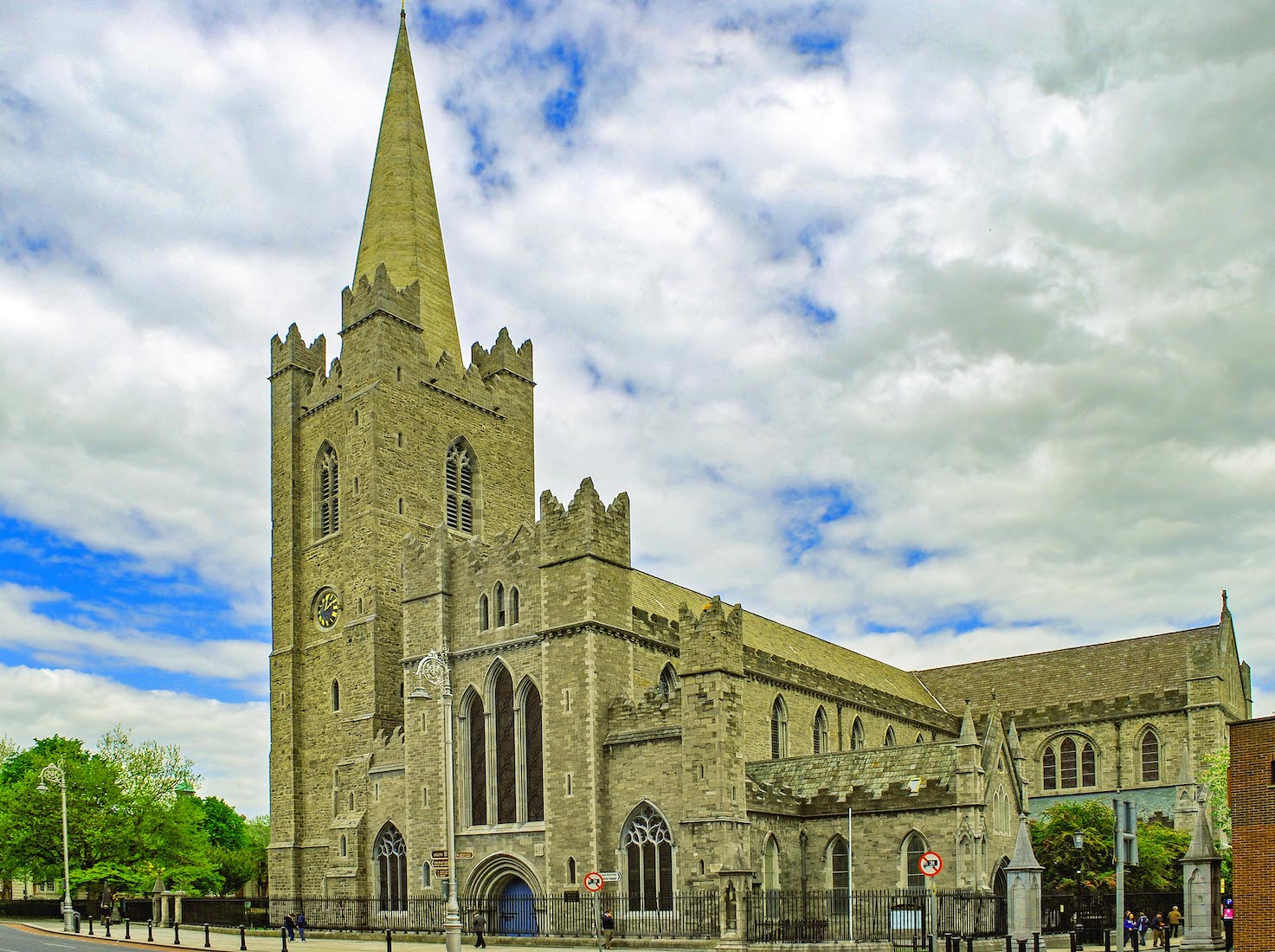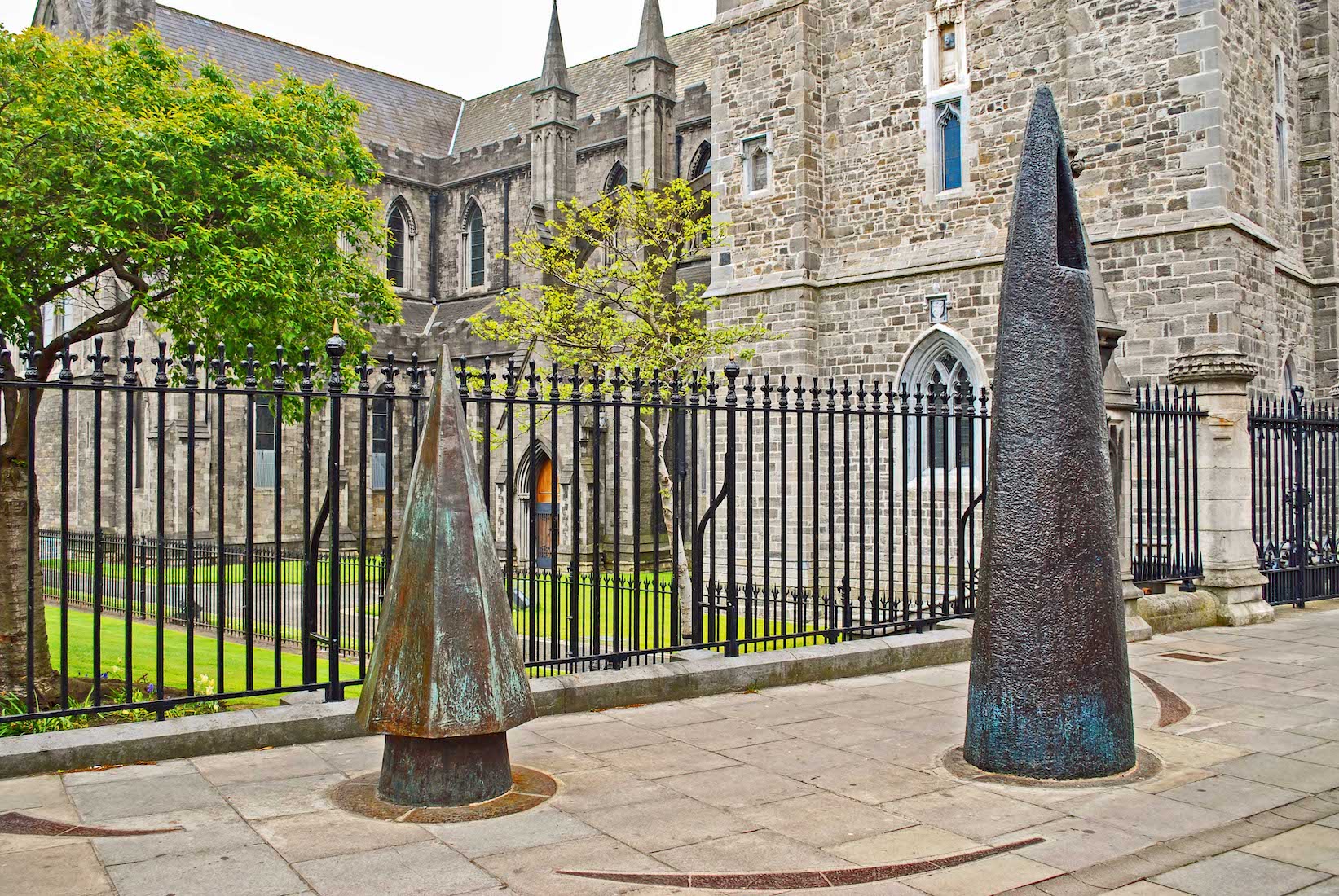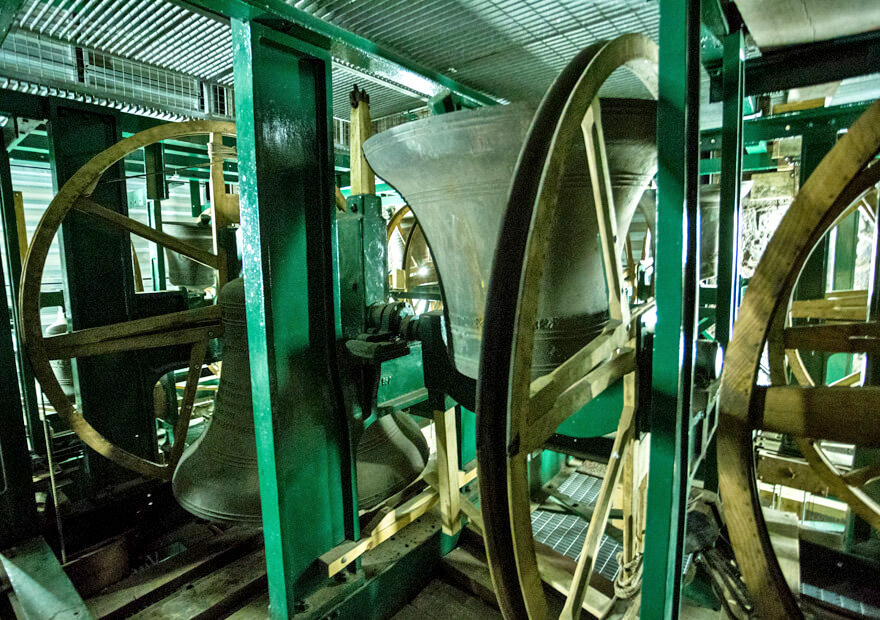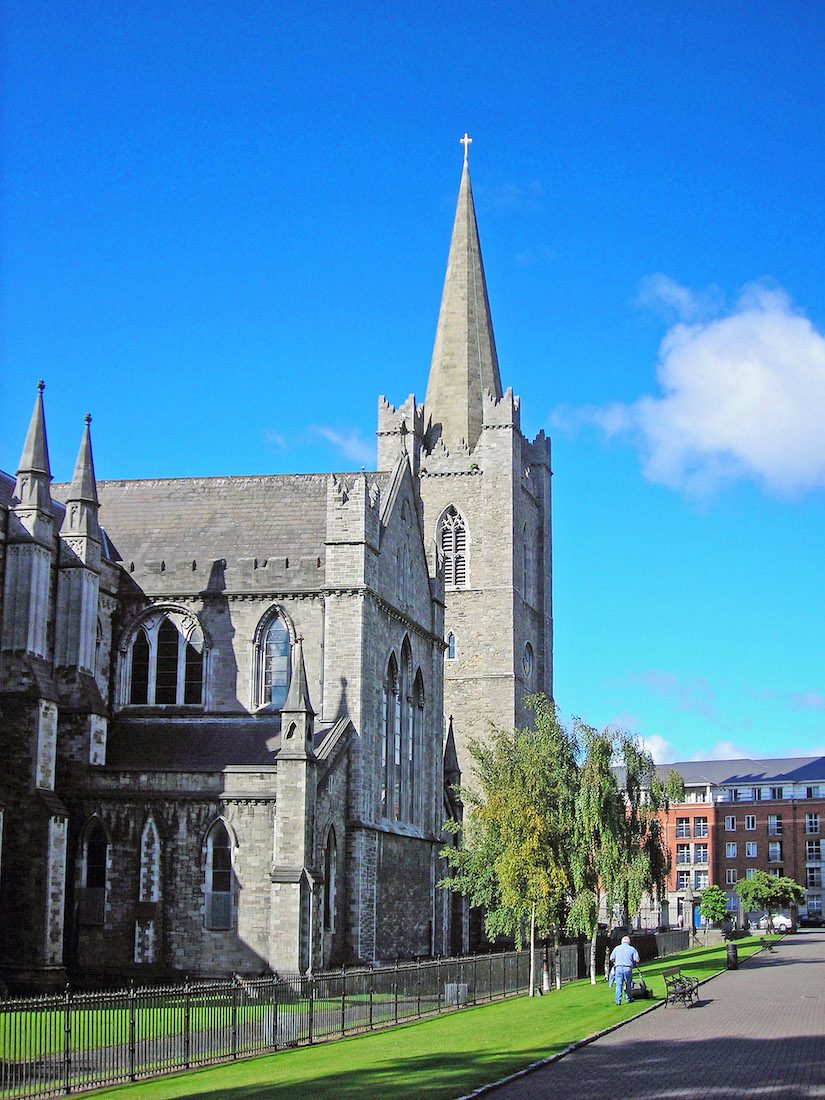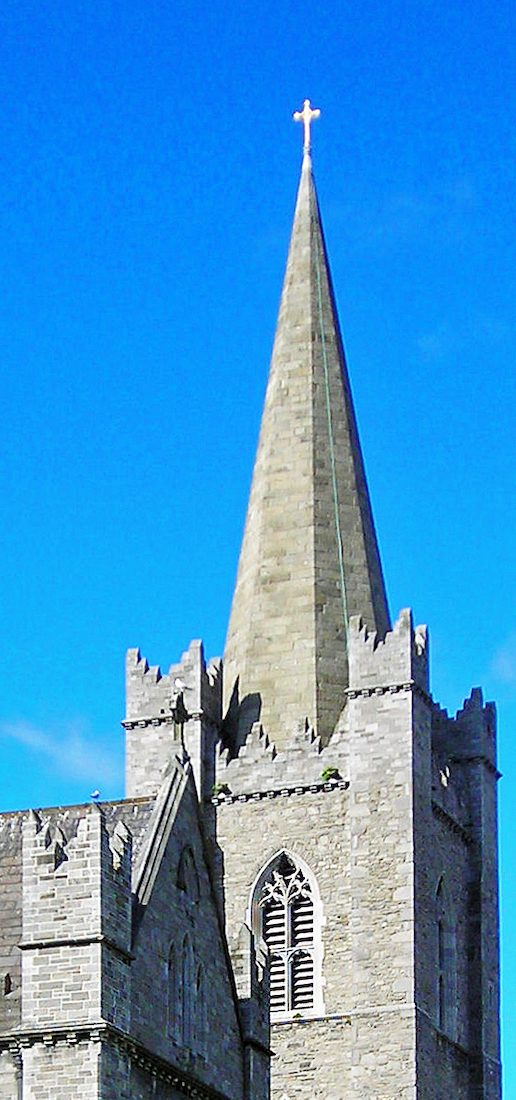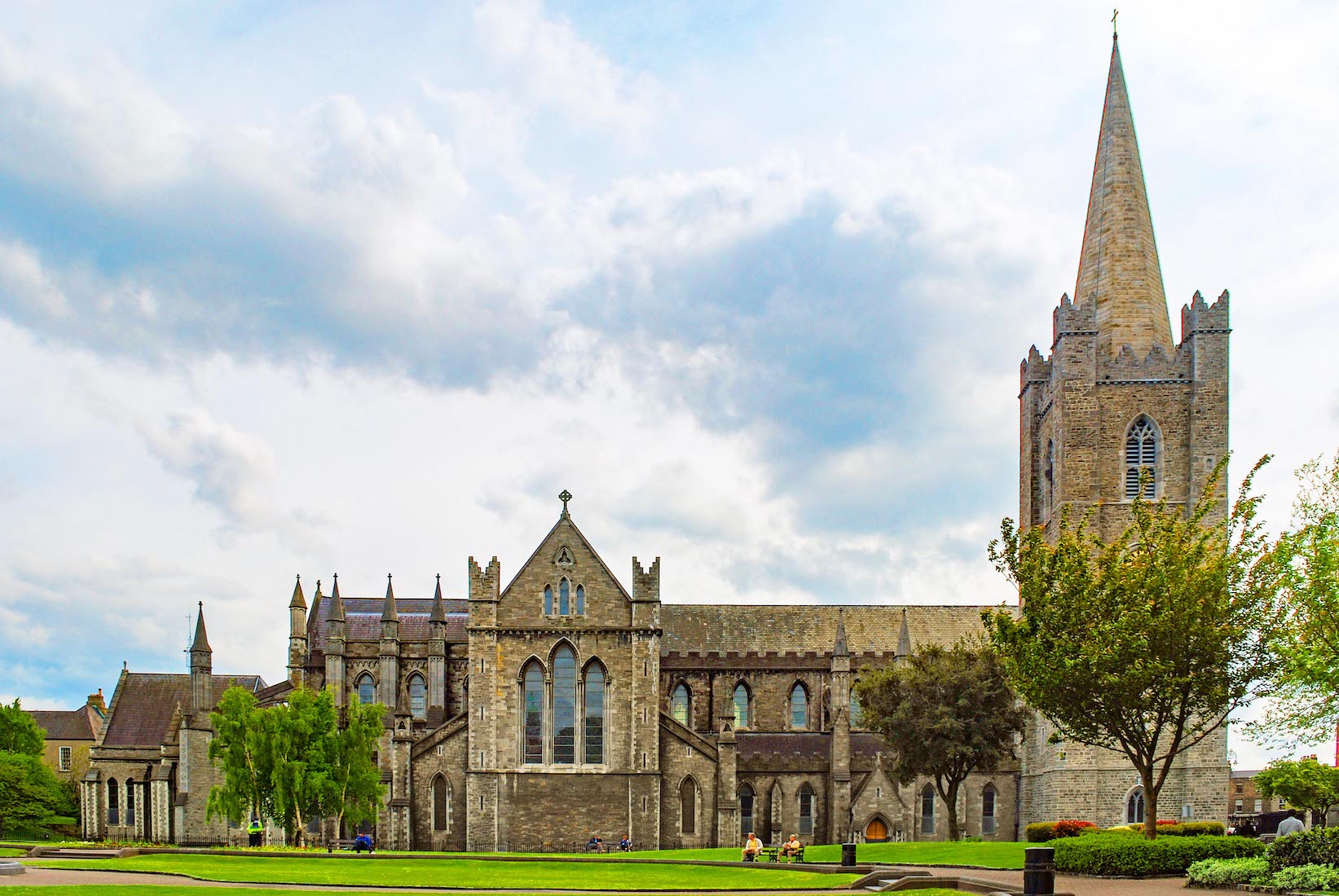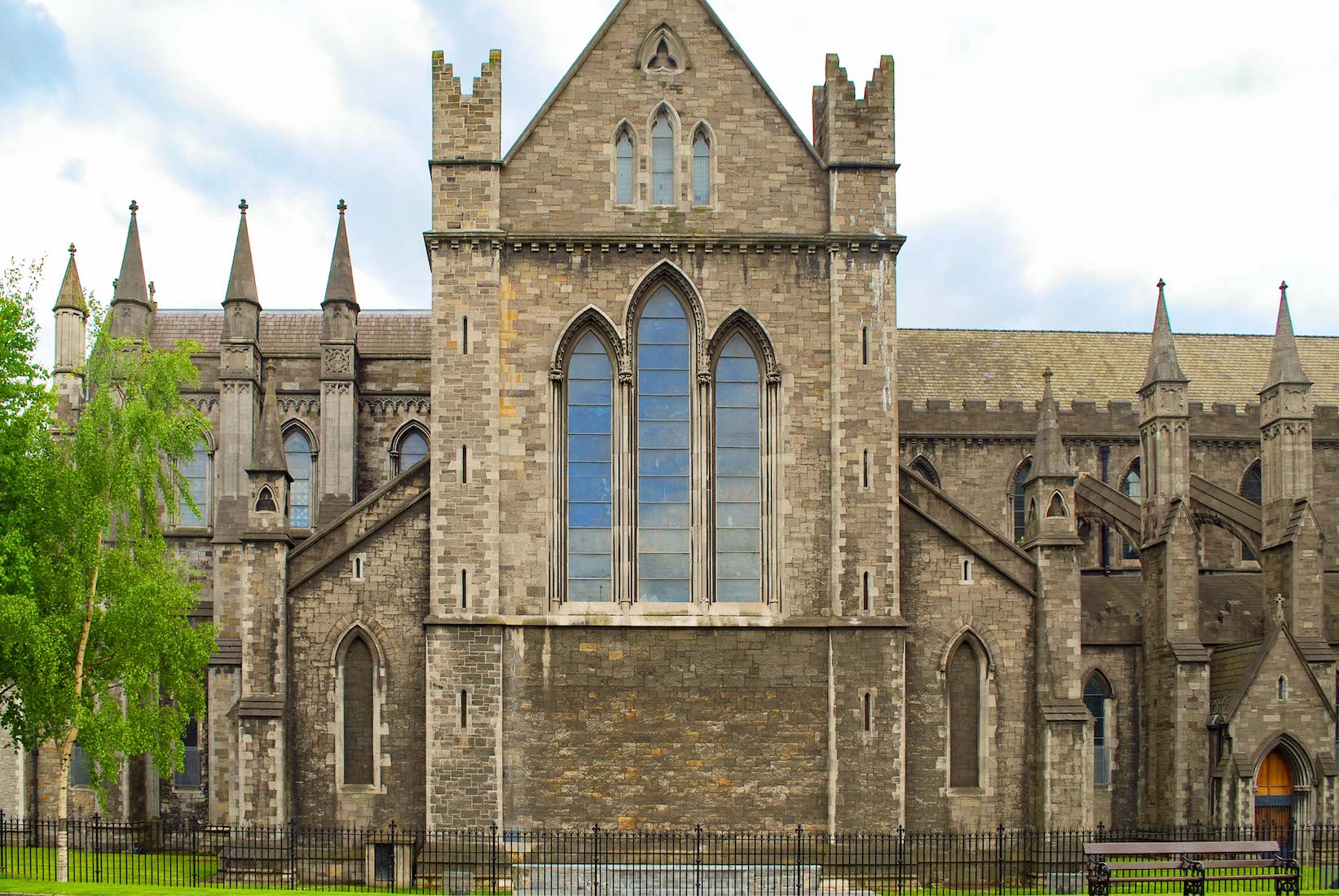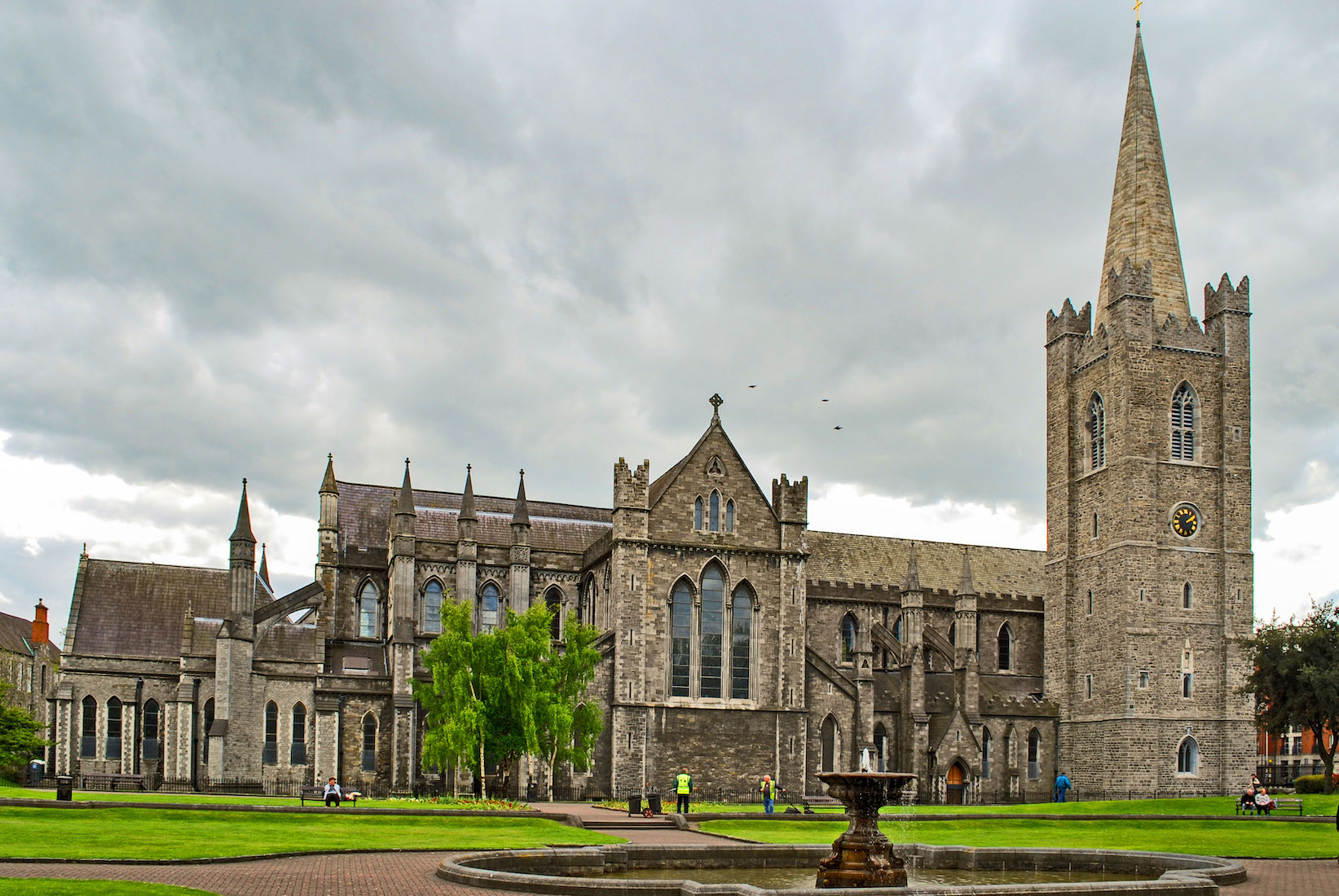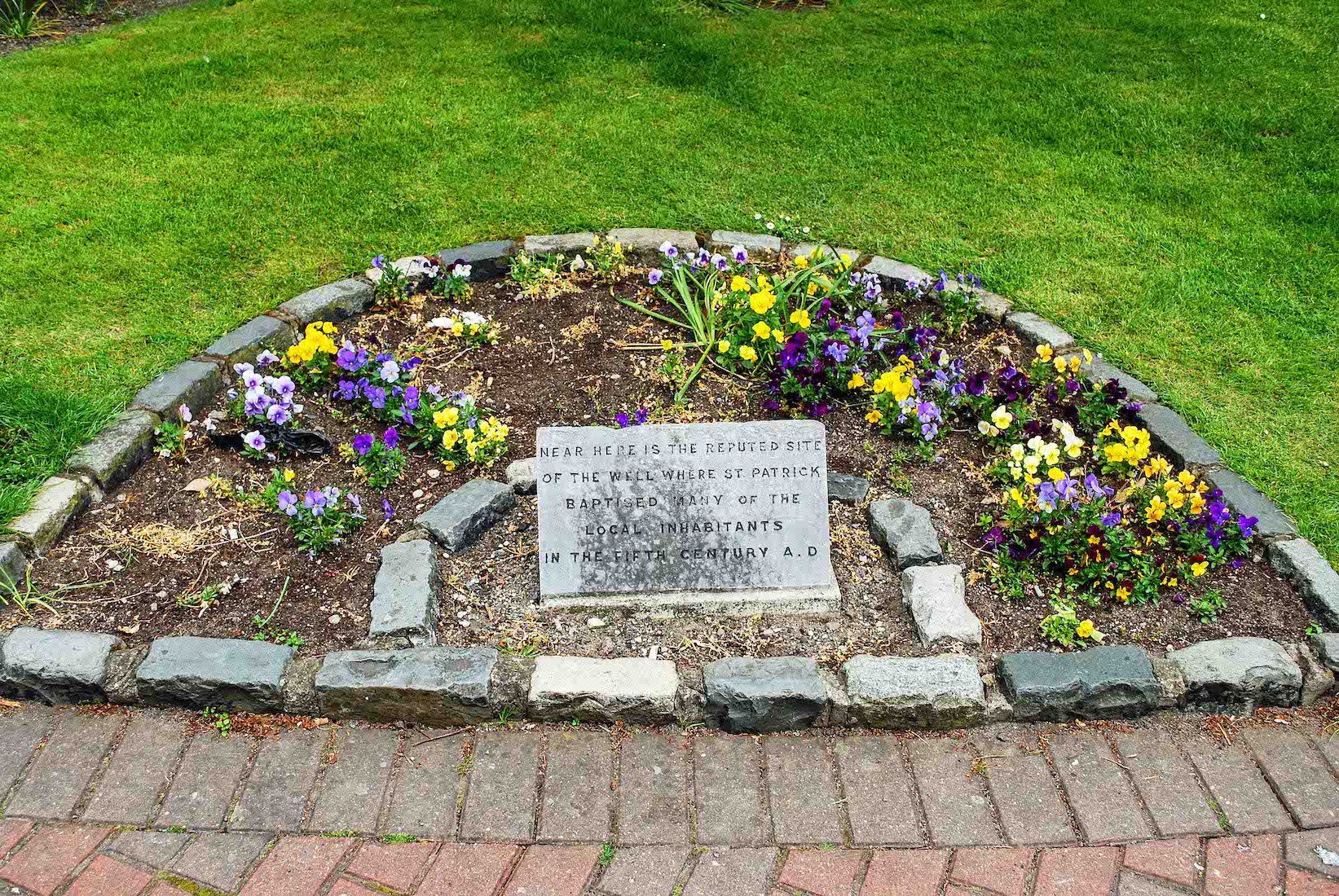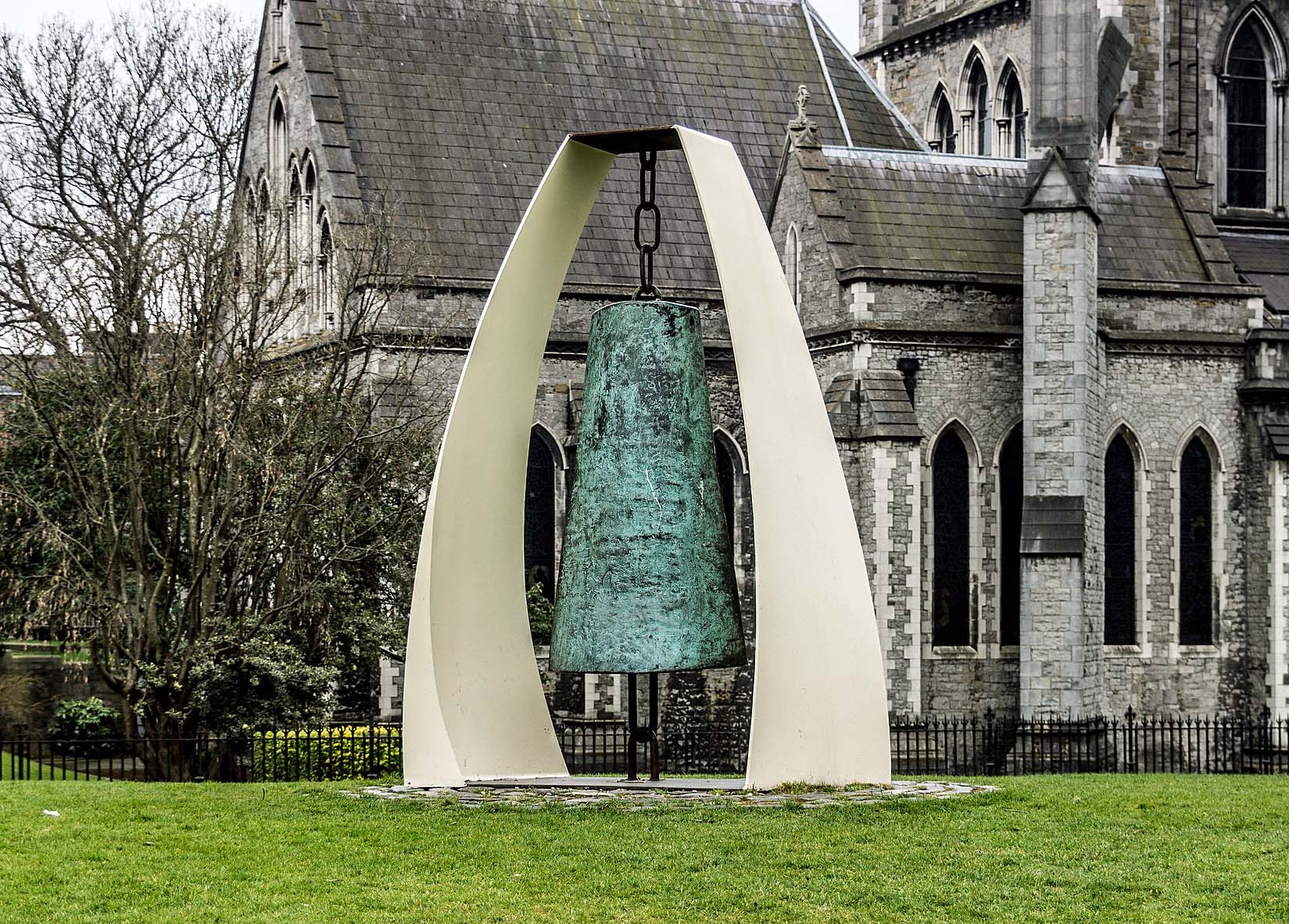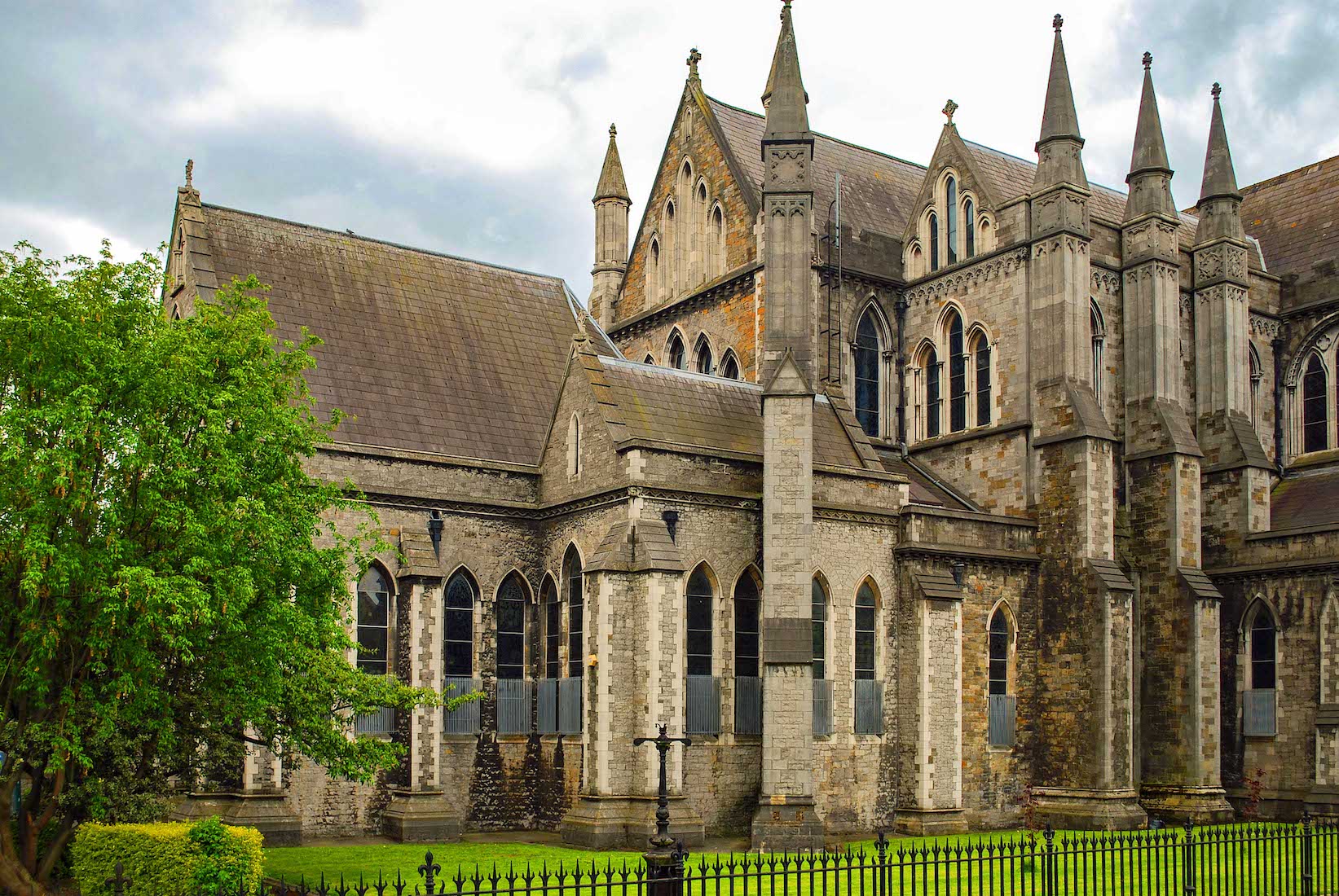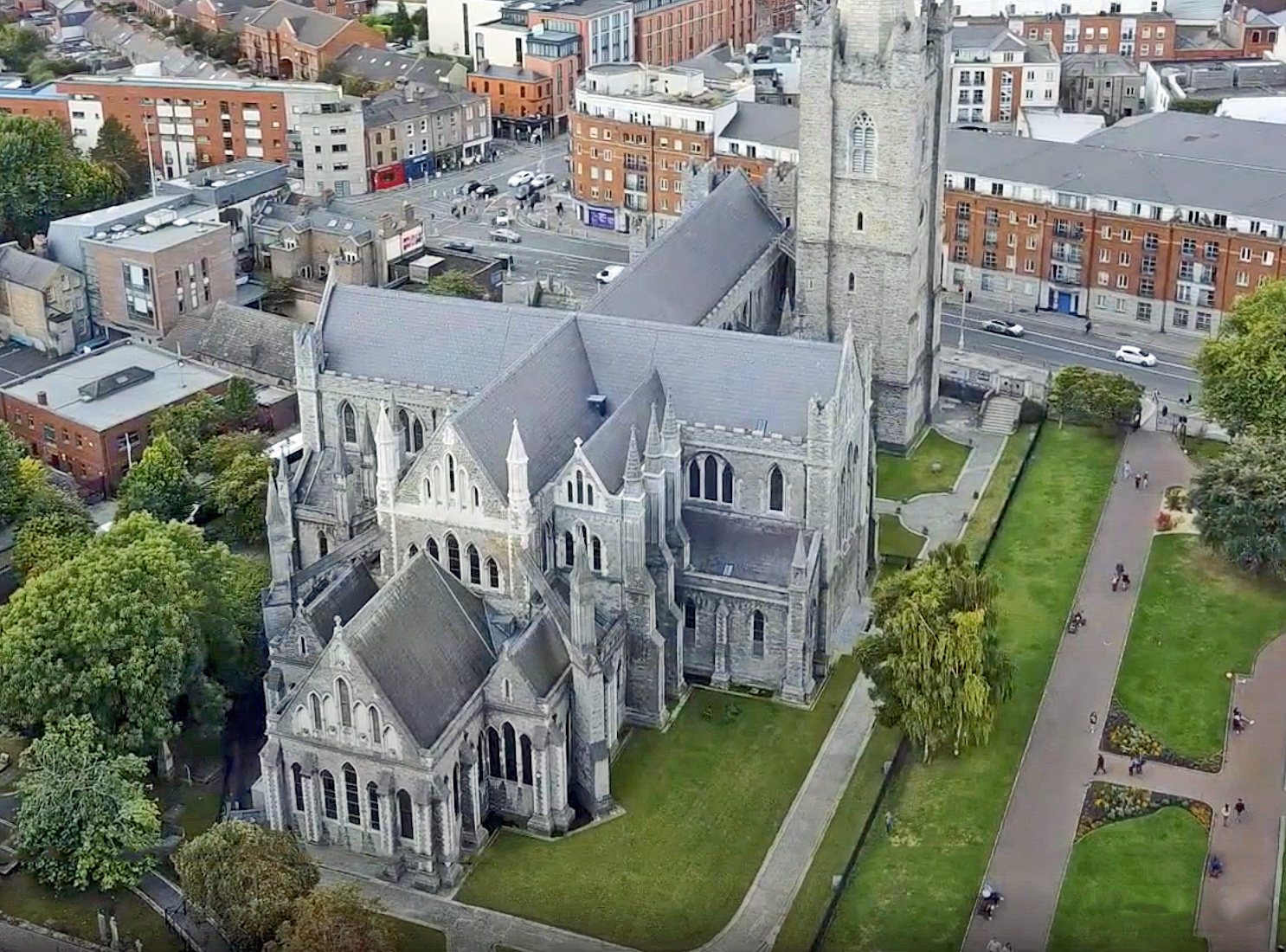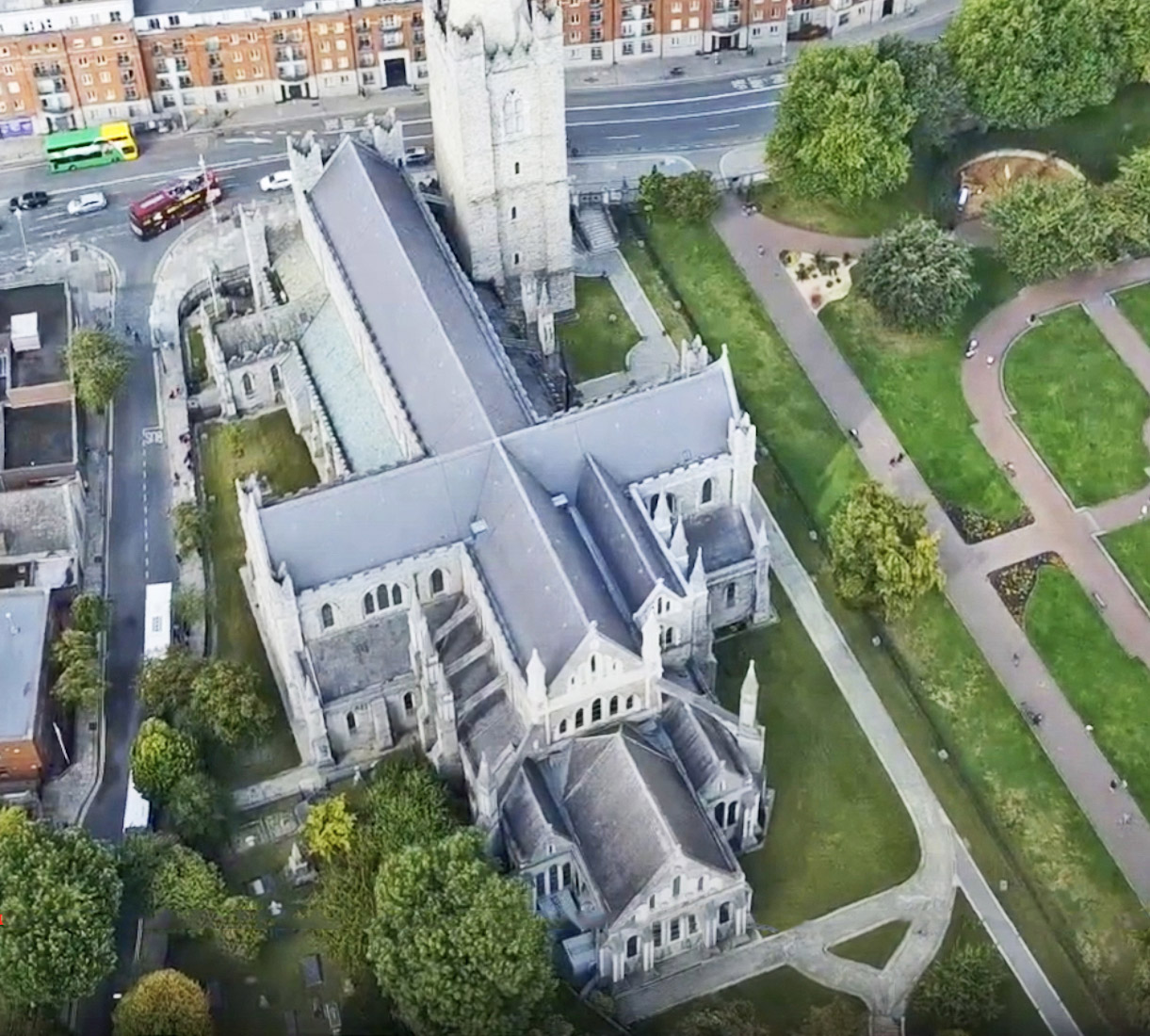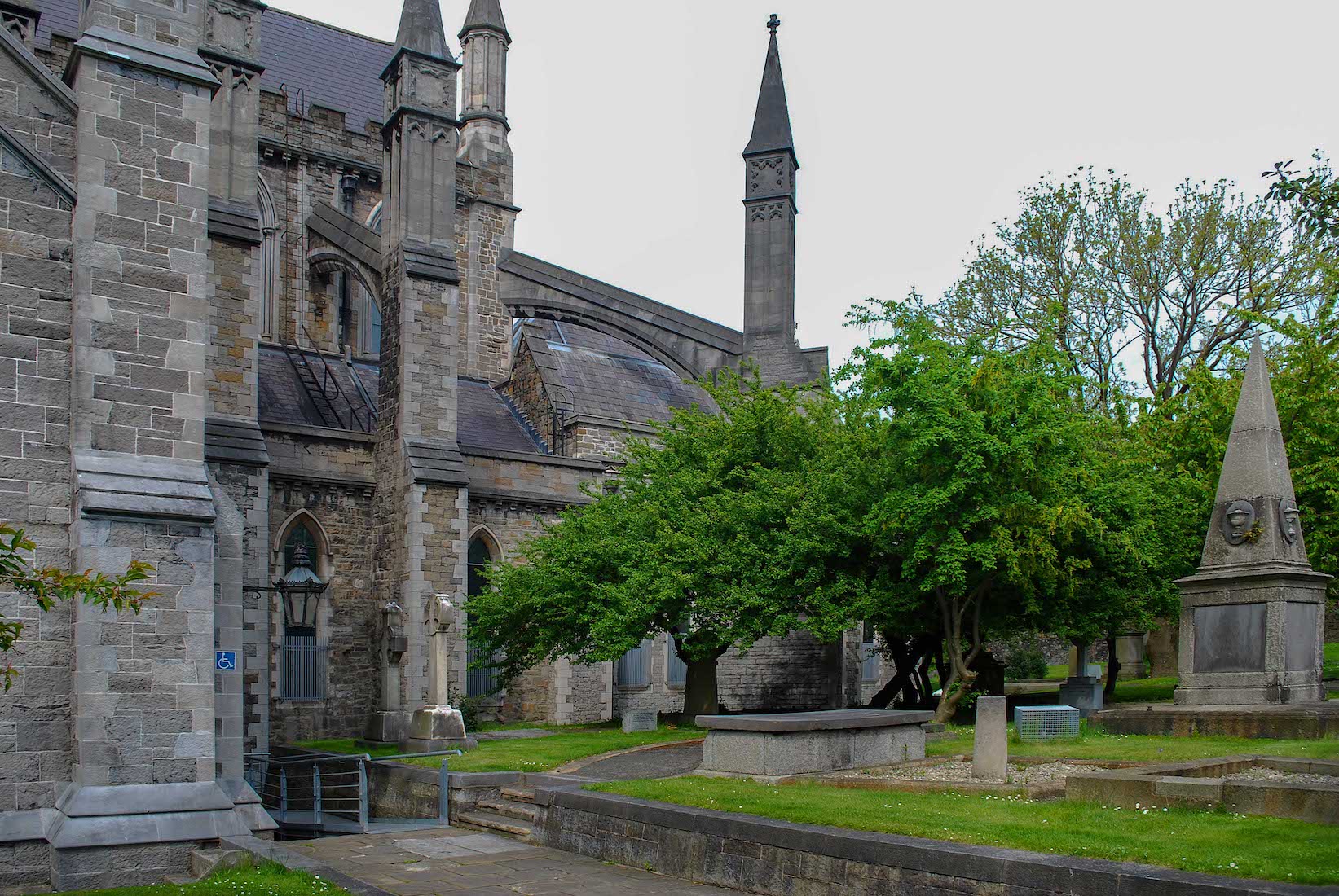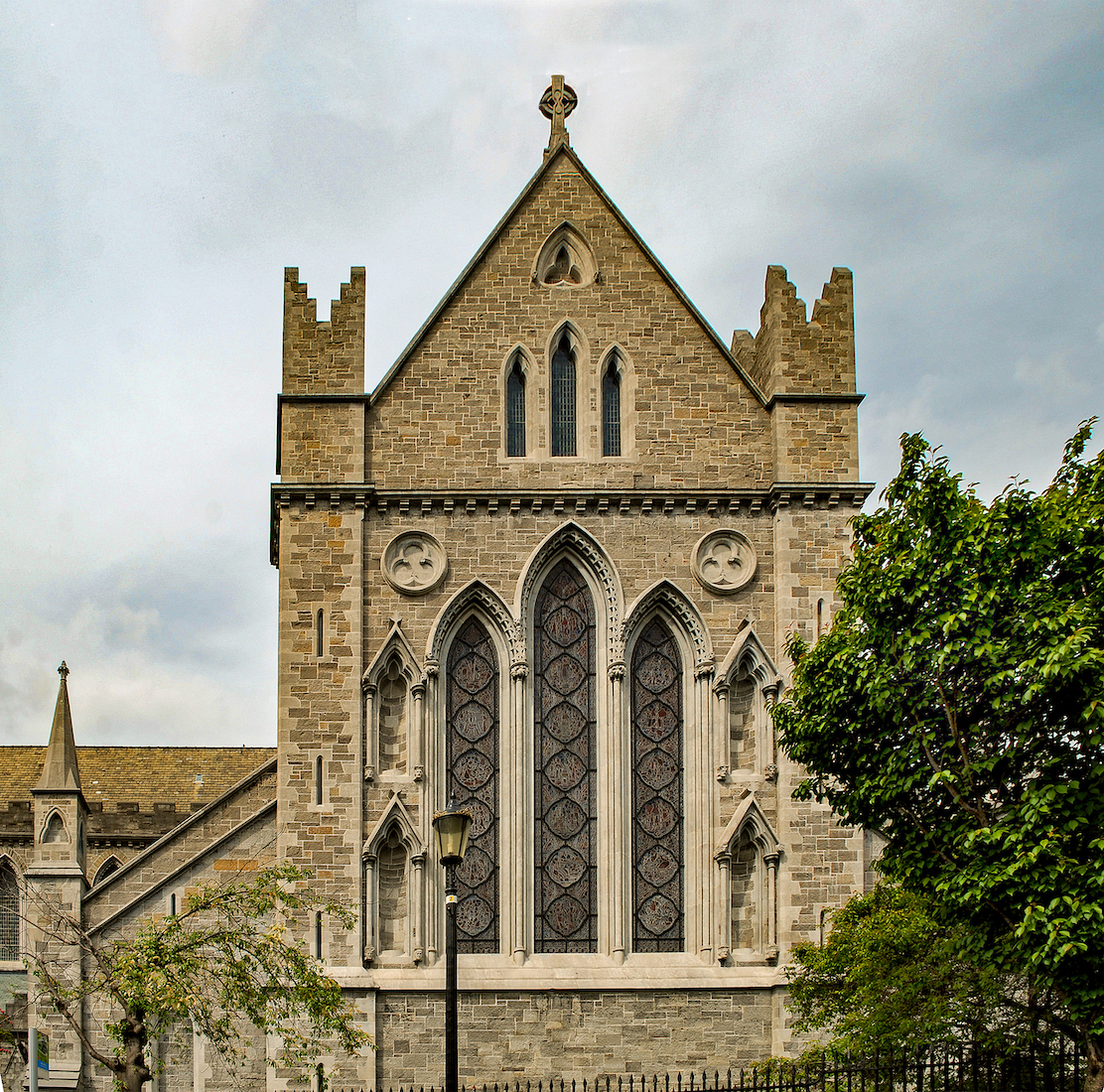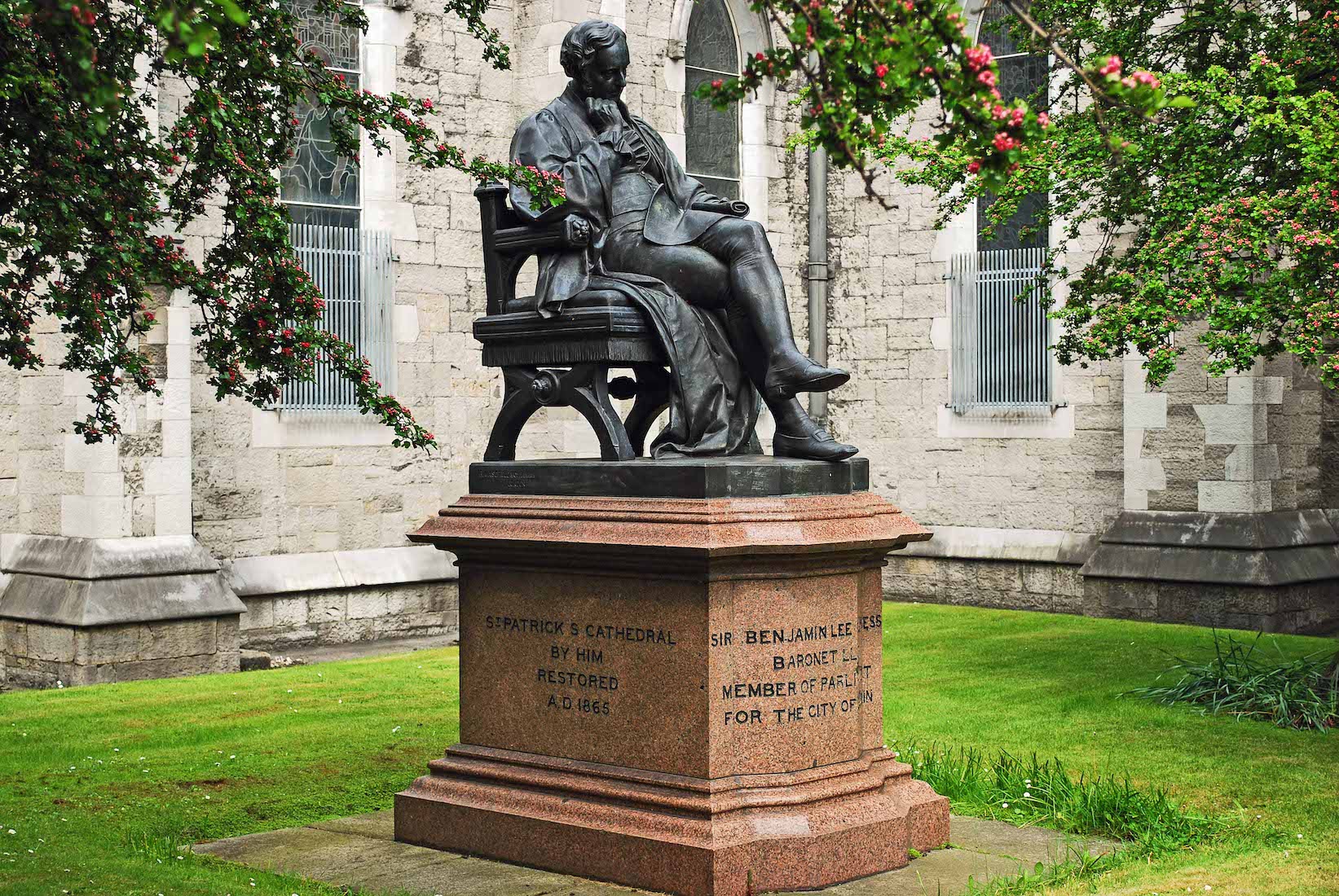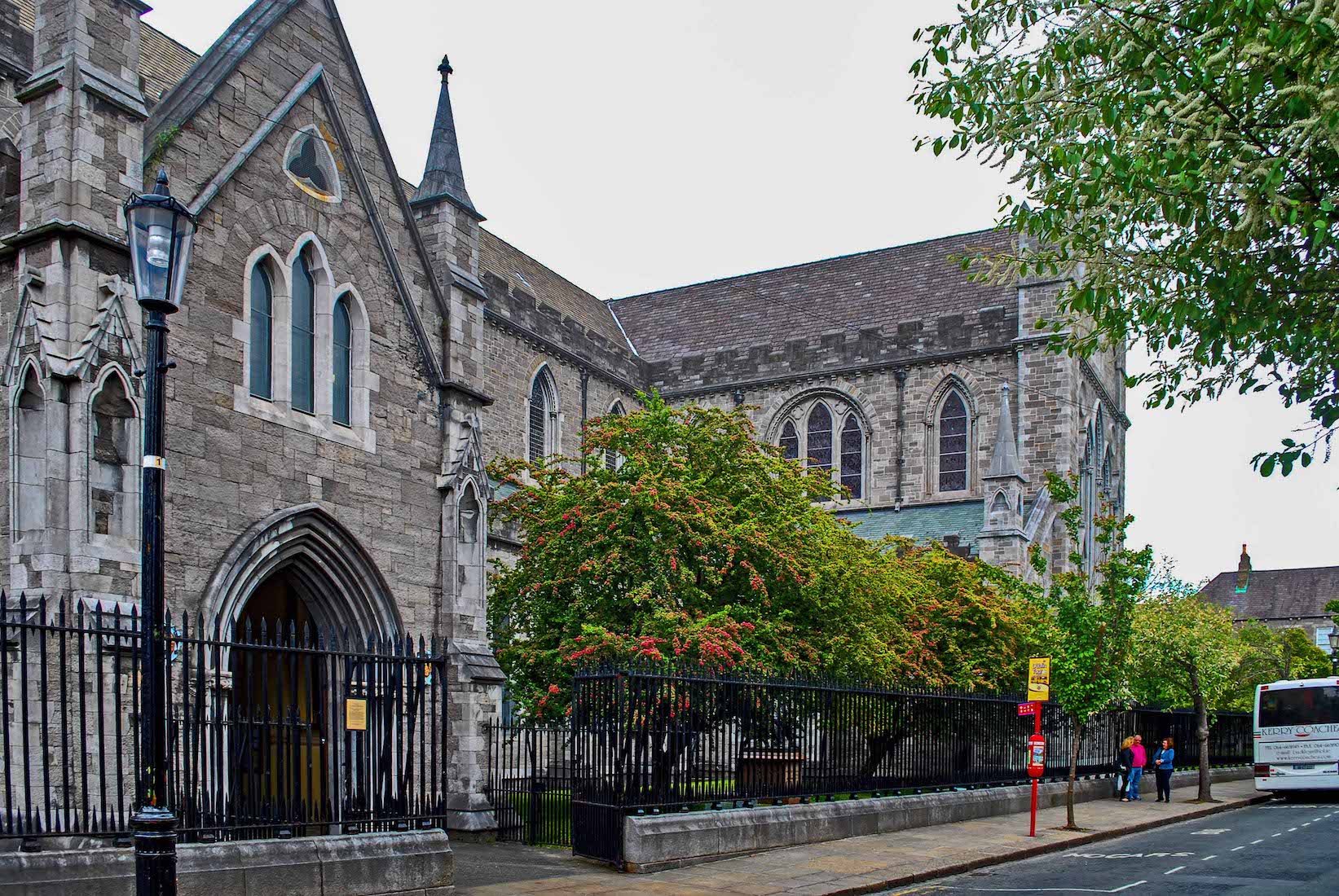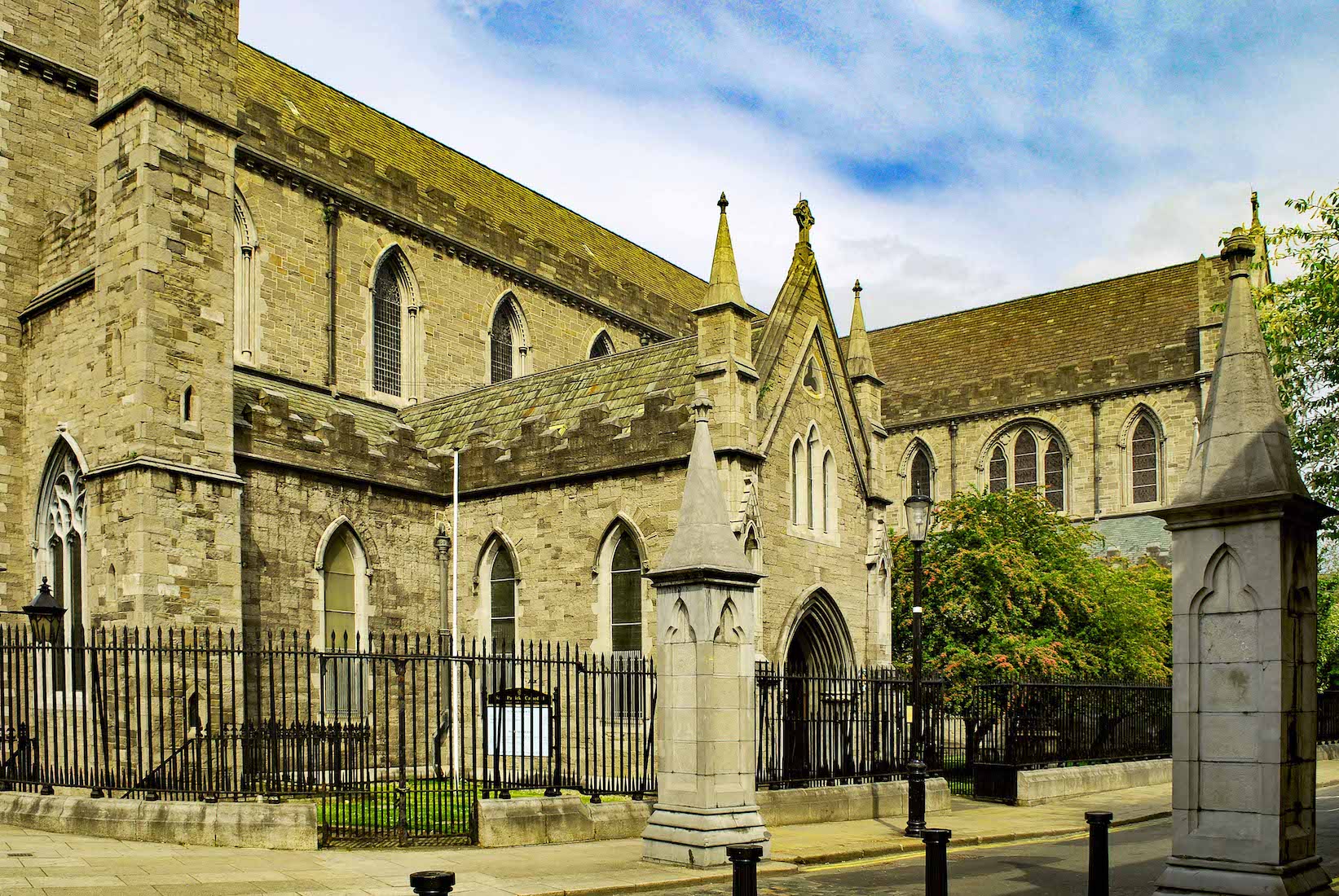
The most natural way to arrive at St Patrick’s Cathedral is to travel south from the city centre down Patrick Street, which brings us to this corner with St Patrick’s Close with its two grand gate posts ... but no gate! The main entry to the Cathedral is just here, but we will explore the exterior first, following around Patrick Street to the left. INDEX
2. SOUTHWEST VIEW LM
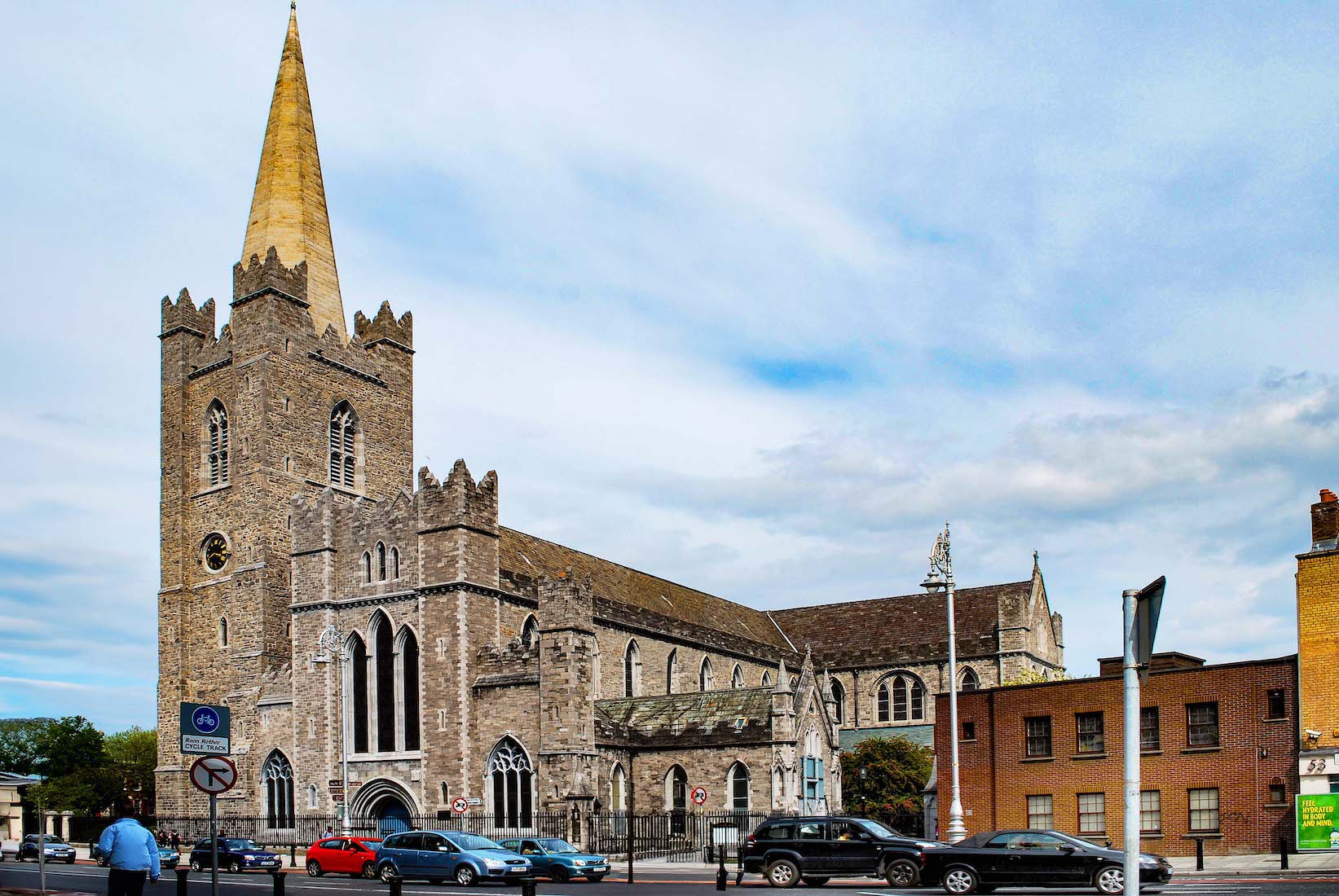
The Cathedral is an impressive structure. Some numbers: Length 300 feet (91 metres); Width across the transepts 160 feet (49 metres); Spire height 225 feet (19 metres).
3. APPROACHING THE WEST WALL LM
As we walk North past the West wall, the trees of St Patrick’s Park start to appear. The Cathedral is largely Gothic in construction, as indicated by the pointed windows. The (blue) West door is normally the main access point to a Cathedral, but constraints of road and boundary fence make this difficult here.
4. WEST WALL LM
Small slits in the wall indicate spiral staircases and access ways up the various towers. The rugged castellation across the various top parapets seems to be a particularly Irish feature: I have not seen it used in cathedrals in other countries.
5. SENTINEL LM
Just North of the Cathedral along Patrick Road is a sculpture by Vivienne Roche called ‘Sentinel’. It is made of cast iron and cast bronze, and the larger form is based on a Viking needle found on the site during excavations.
6. MINOT TOWER LM BD
The tower (Minot's Tower) has a chequered history. The original spire was blown down in a storm in 1316. The tower had to be repaired after a serious nave fire in 1362. The name commemorates Thomas Minot, Archbishop of Dublin 1363–75, who oversaw the rebuilding in Irish limestone with walls ten feet thick. Unfortunately this tower collapsed in c.1394 and a second rebuilding was required. Within the tower is a multi-faced clock mechanism, and also a peel of 12 bells. The bells are rung before services each Sunday. It is possible to join tours of the Minot tower and bells. [Photo2 Credit: Bells Dublin]
7. SPIRE JL JL
The tall spire (225 feet) makes the Cathedral a landmark seen from afar. Interestingly, 225 feet is the height of the tower (without the spire) of Salisbury Cathedral. Salisbury’s spire reaches 404 feet – the highest in Britain. [Photo Credits: Flickr Jim Linwood]
8. VIEW FROM THE PARK LM
St Patrick’s Cathedral is beautifully set off by the adjacent St Patrick’s Park on the Northern side. The design of the Eastern end of this Cathedral (to the left) is particularly interesting.
9. NORTH TRASNEPT LM
This view of the North transept shows the end windows of the covered side aisles – unfortunately filled in. Notice the flying buttresses supporting the nave wall at right, and the delightful turrets with their conical roofs at left. (Contrast the square design at right.)
10. TOWARDS THE EAST LM
There is a large fountain and pool at the centre of St Patrick’s Park – one of the many vantage points from which to view the Cathedral.
11. REPUTED WELL SITE AND LIBERTY BELL LM WM
There are various items of interest within the Park itself. One is a little garden with an inscribed sign: ‘Near here is the reputed site of the well where St Patrick baptised many of the local inhabitants in the fifth century AD.’ And over towards Bride Street there is a large hanging bell – the Liberty Bell. This is another sculpture by Vivienne Rochs and commemorates the ‘Liberties’ of Dublin – town lands, united to the city, but still preserving their own jurisdiction. [Photo2 Credit: William Murphy]
12. NORTHEAST VIEW LM
Still within the Park, but moving right to the East, it is hard to grasp the overall design of the Cathedral’s construction. We notice that the ‘conical’ turrets at right are in fact octagonal, and at centre we are looking straight on at a flying buttress – one of an angled pair. The boundary fence is not very encouraging for those who would like to take a closer look!
13. A HIGH VIEW EC
This drone view makes the situation much clearer. We see that the Lady Chapel with two side chapels has been placed as an addition at the East end of the apse. The addition is nicely delineated by two angled flying buttresses, one on either side. The roof of the Lady Chapel has been shaped at the rear to avoid shading the Eastern apse windows.
14. FLYING BUTTRESSES AND EXTRA GABLE EC
In this more Southerly view we gain insight into another feature. There are three further flying buttresses over the Southern ambulatory, leading from the South transept to the Lady Chapel addition. However, these are missing on the North side because an unusual East - West gable has been added alongside the apse. We shall find later that this houses a set of organ pipes. The grounds at bottom left have been set aside as a graveyard.
15. SOUTHHEAST GRAVES EC
Our final drone view looks down on the Southeastern corner of the Cathedral. Notice the tall obelisk grave: it will help with our bearings for the next ground view. The South transept extends towards the parked buses, and there is a seated statue figure on the open lawn at left of the transept.
16. THE SOUTHEAST CORNER LM
How interesting this Cathedral and grounds are!
17. SOUTH TRANSEPT LM
The South transept looks to have an attractive stained glass window. Above are two decorative roundels, and to the sides, four gabled niches. These probably once held statues of saints, but it often happens that over the years such statues succumb to the weather and are removed and not replaced.
18. SOUTH SIDE LM
We head back towards the South entry. The large clerestory windows are plain, but give good light to the interior of the Cathedral.
19. BENJAMIN LEE GUINESS STATUE LM
Sir Benjamin Lee Guiness was a very successful brewer, a baronet, and a Member of Parliament for the City of Dublin. From 1860 to 1865, he undertook at his own expense, and without hiring an architect, the restoration of the city's St Patrick's Cathedral, an enterprise that cost him over £150,000. In 1865 the building was restored to the dean and chapter, and reopened for services on 24 February.
20. BACK TO THE SOUTHWEST ENTRY LM
We have now arrived back at the Southern entry. It is time for us to enter the Cathedral!


